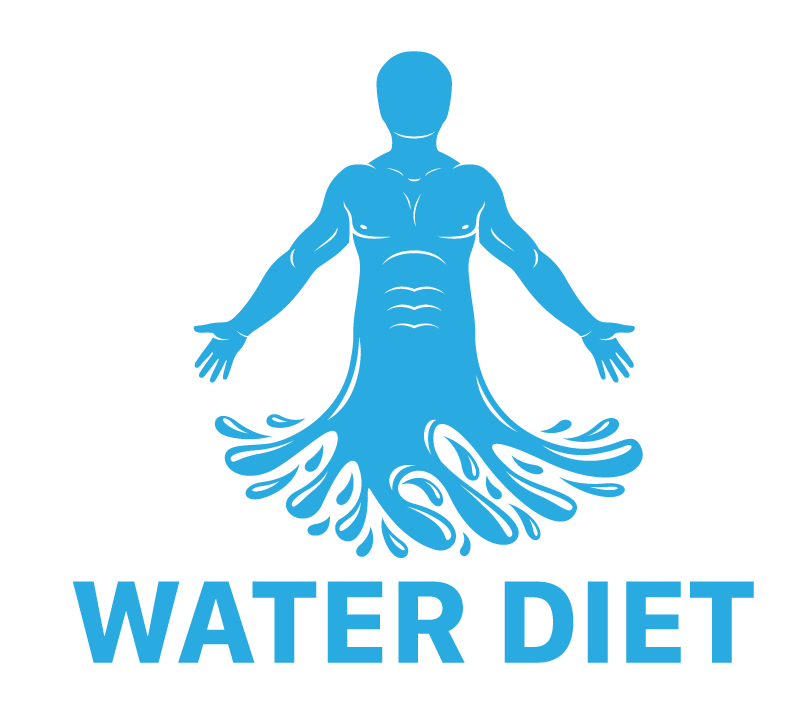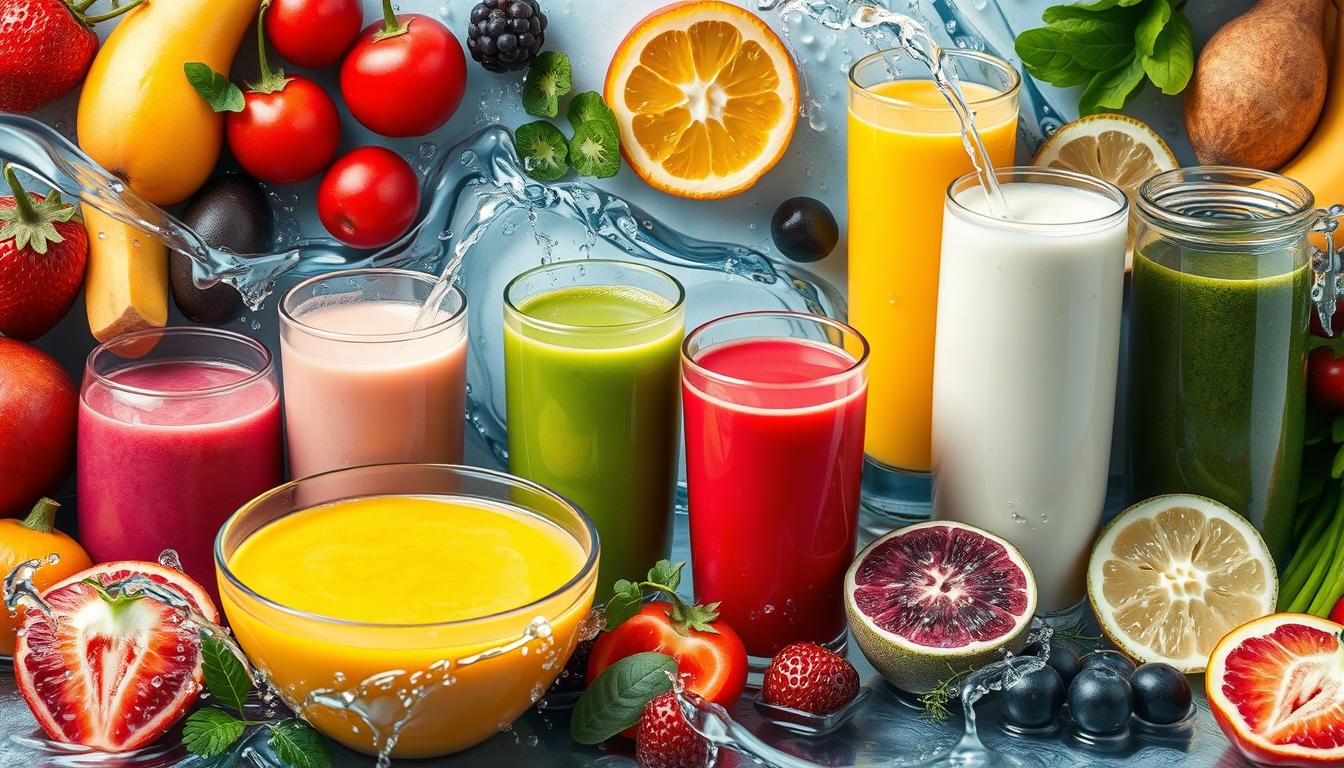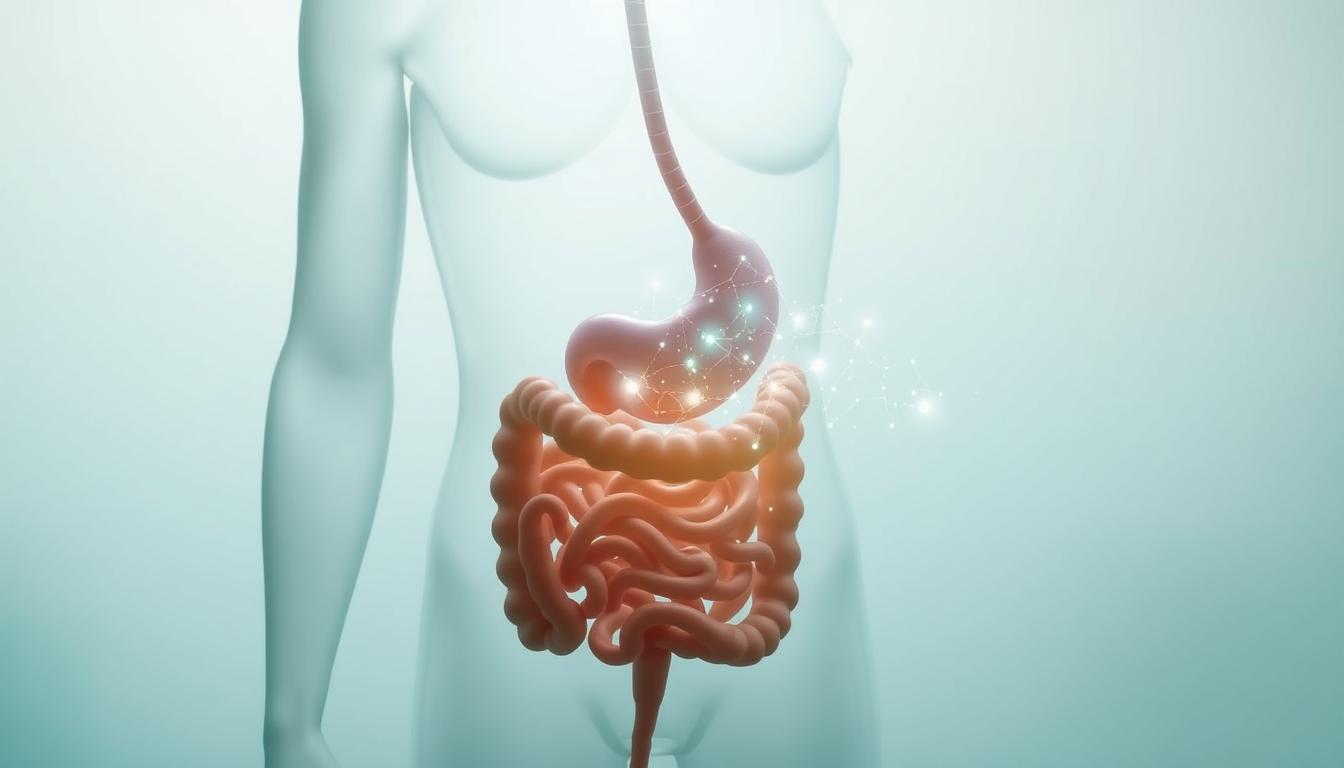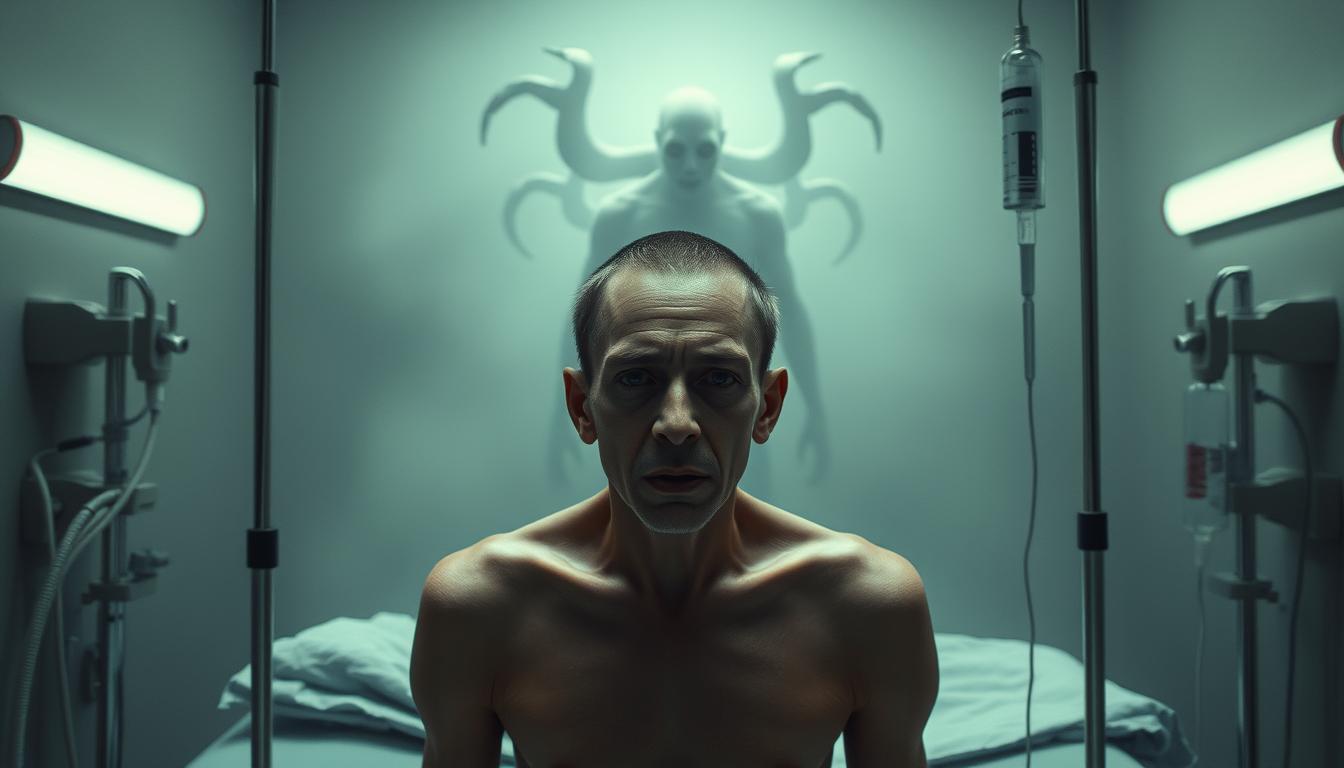Starting a liquid diet is a big step, especially after surgery or stomach issues. It’s gentle on my stomach and helps with eating problems. This diet gives me about 1,500 calories and 45 grams of protein daily, with lots of flavors to choose from.
It’s all about getting the right nutrients without stressing my stomach. This is a key step towards eating solid foods again. To succeed, I need to follow important liquid diet tips and successful liquid diet strategies.
This approach is not just about losing weight fast. It’s about listening to my body and helping it get ready for solid foods again. With the right tips, I can make sure my body gets what it needs during this time.
Key Takeaways
- Making the switch to a liquid diet can help those with digestive challenges.
- A balance between calories and protein is key for a full liquid diet’s success.
- Sufficient preparation and gradual reintroduction to solid foods are essential to prevent any yo-yo diet effects.
- Seeking professional advice is crucial to tailor the diet to my personal health requirements.
- Understanding the difference between clear and full liquid diets puts me in control of my nutritional intake.
- Monitoring my body’s response to a liquid diet ensures I stay on the right track.
Understanding the Basics of a Liquid Diet
Starting a liquid diet can feel overwhelming without the right advice. It’s key to know the difference between a full and clear liquid diet. We’ll look at what these diets include, how to switch smoothly, and why keeping nutrition balanced is important.
Definition and Purpose of a Full Liquid Diet
A full liquid diet includes clear liquids like broth and tea, plus thicker foods like milkshakes and pureed soups. It’s designed to ease digestion while offering more nutrients than clear liquids. This diet is often used after surgery or during treatments to help patients eat normally again.
Transitioning from Clear to Full Liquid Diets
Switching from clear to full liquid diets needs to be done carefully to avoid stomach problems. Adding thicker liquids helps your body get ready for solid foods. This step usually lasts about two weeks, making it a crucial time for watching what you eat.
Nutritional Considerations and Daily Intake Recommendations
Even on a liquid diet, it’s important to eat balanced. A good full liquid diet should have enough proteins, carbs, and nutrients for daily life. Here are some key nutrition tips:
| Diet Type | Calories | Carbohydrates (grams) | Proteins (grams) |
|---|---|---|---|
| Regular Adult Diet | 1,600 – 3,000 | 225 – 325 | Varies |
| Full Liquid Diet | 1,500 | Varies | 45 |
On a full liquid diet, eating small meals often helps spread out nutrients. Adding fiber can prevent constipation, a common problem. Always talk to a doctor, especially if you have health issues.
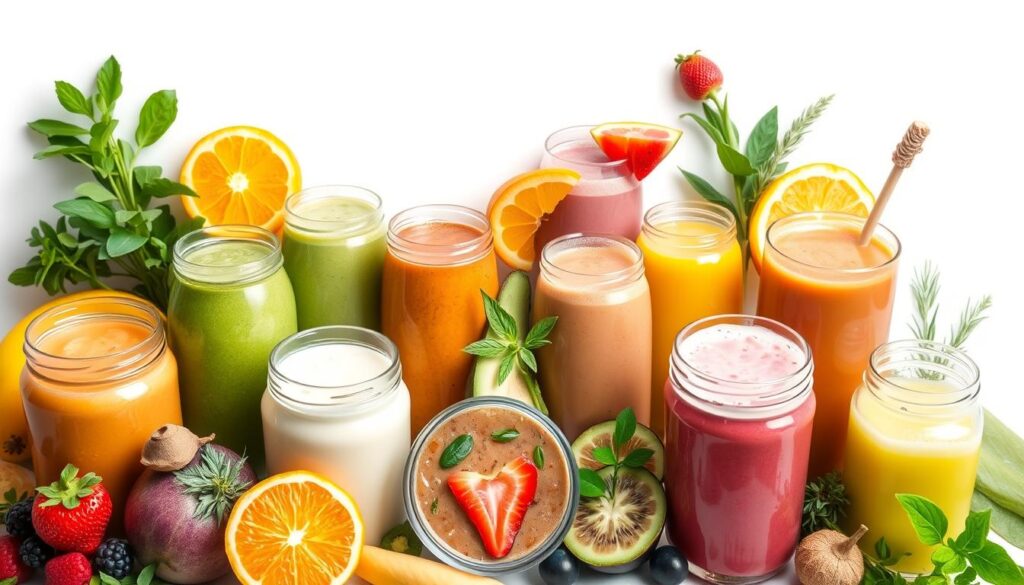
By following these liquid diet health tips and water-based diet advice, you can manage your diet well. Whether it’s for medical reasons or to transition to a new diet, knowing the basics is key to a successful journey.
Planning Your Liquid Diet Meals
Starting a liquid diet means you need to plan well to get all the nutrients you need. Here are some tips to make your liquid diet meals tasty and healthy.
At the core of these tips for starting a liquid diet is mixing up flavors and nutrients. For instance, a morning shake can give you carbs, proteins, and fats. Try the ‘Jordan Smoothie’ for a nutritious start. It has whole milk, yogurt, apple juice, banana, and baby food, all blended together.
Lunch can be a savory blend like the ‘ABC’ Cheese Enchilada. It has a corn tortilla, cheddar cheese, jalapeño, cilantro, onion, and olives, all mixed with enchilada sauce and water. It’s a filling option that stays within diet limits.
Snacks can be light and refreshing. Think of a Fruit Smoothie or Melon Shake. These drinks have strawberries, cantaloupe, yogurt, and milk or orange juice, all blended. They’re tasty and full of vitamins and water.
Dinner can be richer with a Strawberry Cheesecake Shake or an Orange Julius. These drinks mix fruits with yogurt or powdered milk, adding vanilla or cream cheese. They taste like dessert but still follow the liquid diet rules.
Balance is key in a liquid diet. Getting enough protein, carbs, fats, and vitamins from liquids is hard but doable with good planning.
Here’s a daily menu that keeps you energized and satisfied:
| Time of Day | Meal Type | Suggested Liquid Meal |
|---|---|---|
| Morning | Breakfast | Jordan Smoothie |
| Mid-Morning | Snack | Fruit Smoothie |
| Afternoon | Lunch | ‘ABC’ Cheese Enchilada (blended) |
| Mid-Afternoon | Snack | Melon Shake |
| Evening | Dinner | Strawberry Cheesecake Shake |
| Late Evening | Snack | Orange Julius |
Essential Tips for Success on a Water-Based Liquid Diet
Starting a liquid diet can be a big change, especially with a water-based approach. To do well, it’s important to use effective water-based diet strategies and know what nutrients you need.
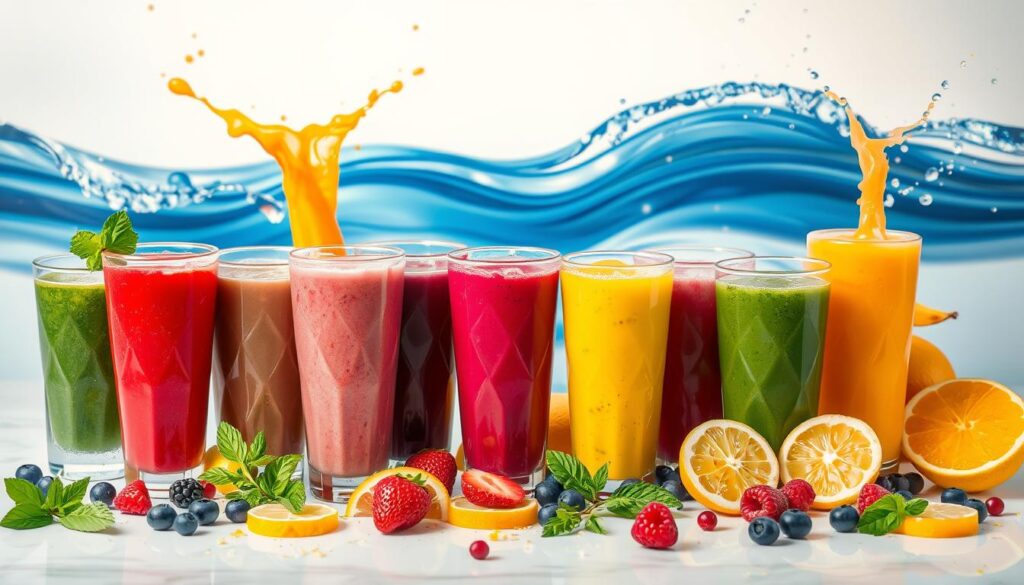
Strategies for Meeting Nutritional Goals
On a water-based diet, picking the right drinks is key. Choose drinks that are full of nutrients like broth and protein-rich smoothies. Also, pick meals that are in liquid form but still give you the right amount of calories.
Using meal replacement shakes can also help. Studies show they can cut body fat by 7% in just 30 days. This is when you drink 700 calories from these shakes every day.
Choosing the Right Liquids and Supplements
It’s important to pick the right drinks on a water-based diet. Go for low-sugar options like green juices and clear teas. These drinks give you nutrients without too many calories.
Avoid drinks with a lot of sugar. They can mess up your diet goals. Adding protein powders and vitamins can also help keep your diet balanced. This ensures your body gets all the nutrients it needs.
Listening to Your Body’s Signals
Listening to your body is crucial on any diet, especially a liquid one. Pay attention to when you’re hungry or full. This helps you adjust how much you drink.
If you feel very tired or dizzy, it might mean you’re not getting enough nutrients. Talk to a doctor to see if you need to change your diet. This can help you feel better and more energetic.
Sticking to liquid diet tips and strategies can help you lose weight and stay healthy. For more on how water helps with weight loss, check out this analysis on hydration.
Remember, being consistent is the key to success. By following these essential tips for success on a water-based liquid diet, you can stay healthy and full of energy during your diet.
Overcoming Challenges During Your Liquid Diet
Starting a liquid diet, especially for bariatric surgery, can seem tough at first. It’s important to know how to handle these challenges. You’ll need to think about digestive changes and the mental side of eating less.
Dealing with Digestive Changes and Weight Fluctuations
Adjusting to a liquid diet can upset your stomach. You might get constipation or diarrhea. But, these problems can be fixed with the right steps.
Healthcare experts suggest adding fiber supplements. Also, using protein shakes that are full of nutrients but don’t take up much space can help. This keeps your digestion regular and stops big weight changes.
Addressing Taste Fatigue and Appetite Loss
It’s common to get tired of the same tastes on a liquid diet. To keep things interesting, try different flavors and textures. Switch between savory broths, sweet protein shakes, and herbal teas.
This variety will keep your diet exciting. It makes following the liquid diet something to look forward to every day.
Ensuring Safe Medication Intake and Hydration
It’s crucial to manage your medicine on a liquid diet safely. Talk to your doctor about liquid or dissolvable medicines. This way, you can stick to your diet without missing out on your meds.
Drinking enough water is also key. Try to drink the amount the Institute of Medicine suggests. This helps keep you healthy and supports your diet’s success.
By facing these challenges with the right mindset, you’ll make your liquid diet journey easier. This disciplined approach can greatly benefit your health and medical goals. Remember, the hard work is worth it for the long-term benefits.
Conclusion
Reflecting on a liquid diet journey, it’s more than just weight management. It’s about understanding our body’s needs and meeting them thoughtfully. Following key tips for a water-based diet can be life-changing. It can help with detox, reduce inflammation, and prepare for surgeries.
Starting a liquid diet needs careful planning. It’s important to avoid losing muscle mass and to focus on lasting weight loss. A liquid diet cuts calories by almost half, helping with weight loss. But, it’s crucial to stay active and watch for side effects like fatigue.
For the best results, staying hydrated is key. Resources like unlocking the water diet benefits offer great advice. Gradually adding solid foods is important for keeping weight off and maintaining health. So, use these tips to start a liquid diet and make healthier choices for the long run.
